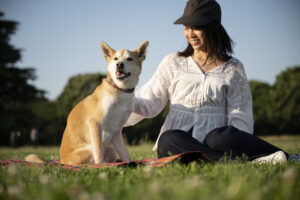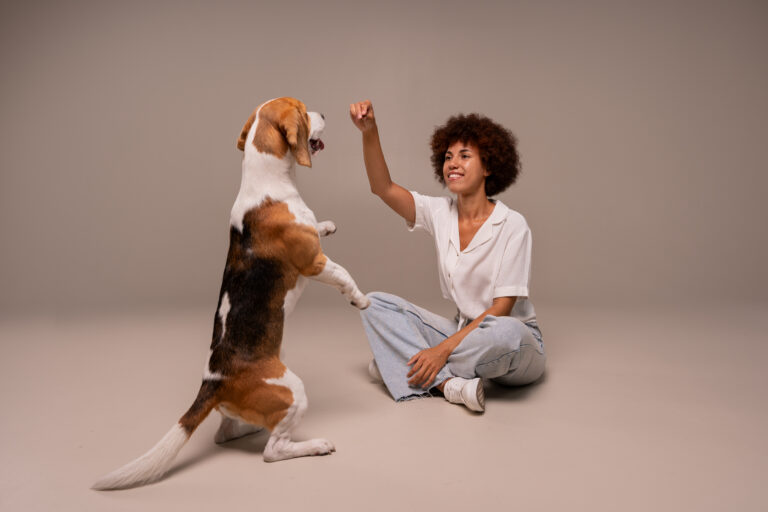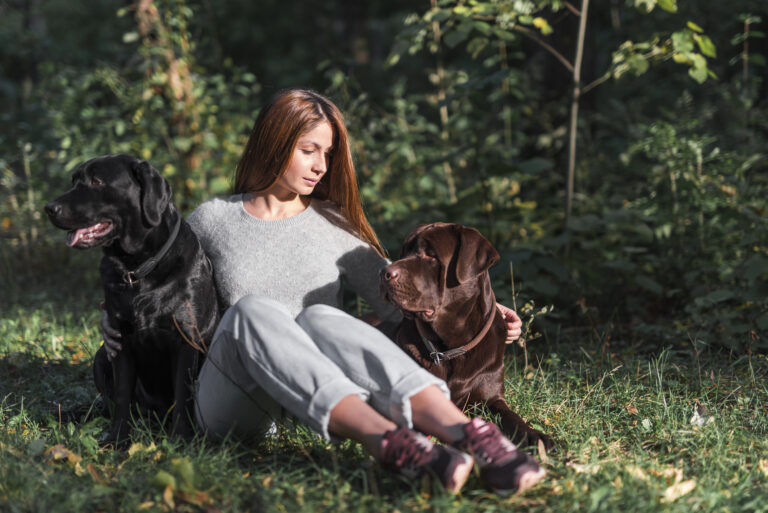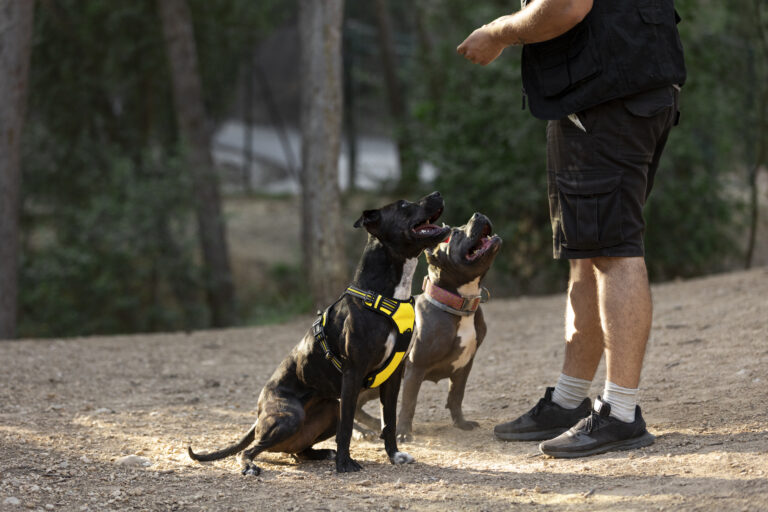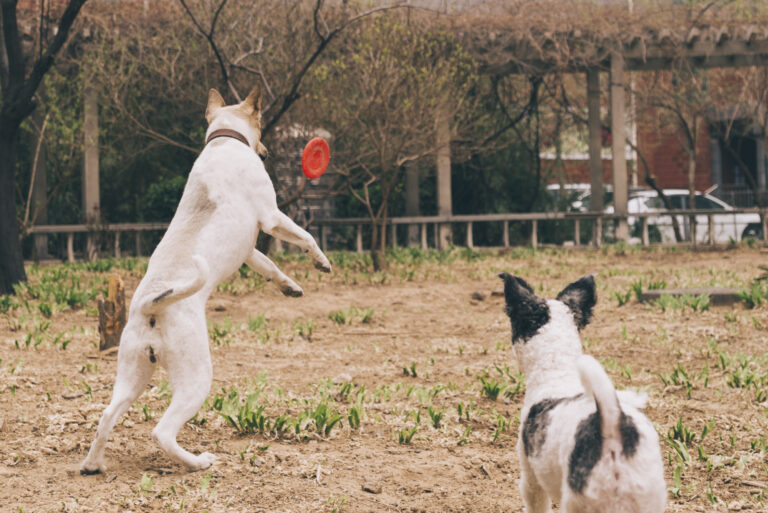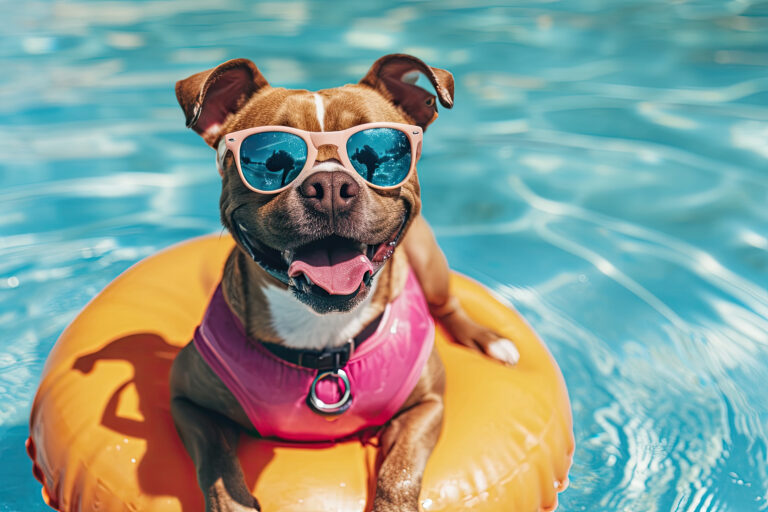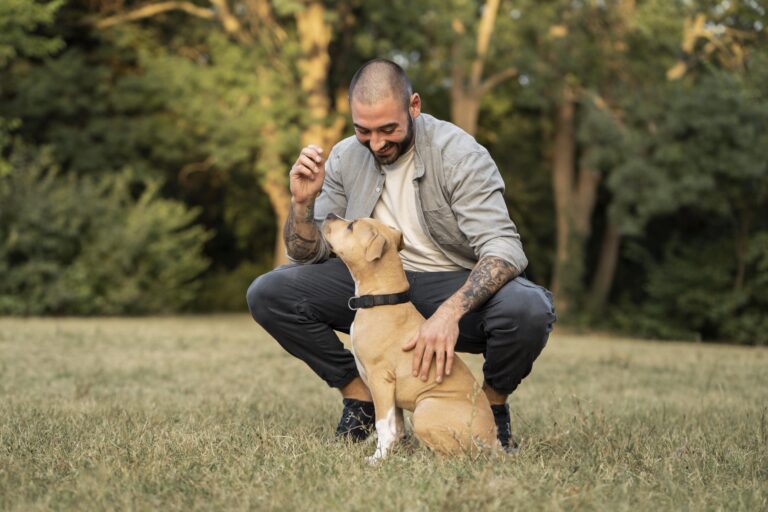The Dangers of Overexertion: Training Your Dog for Hot Weather Activities
Training your dog for hot weather activities is essential to prevent overexertion and ensure their safety. In this article, we will explore the risks associated with hot weather training and provide tips on how to keep your dog cool while staying active.
Research indicates that over 60% of pet owners aren’t aware of the symptoms of heatstroke in dogs, posing a significant risk during summer activities. Many times, what begins as an enthusiastic playtime can quickly spiral into a dangerous situation. Recognizing the signs of overexertion is crucial for preventing heat-related health issues in dogs.
The dangers associated with overexertion are deeply rooted in misunderstandings about a dog’s physical capacity in hot weather. Historically, dogs were bred for endurance, not dealing with high temperatures, leading to increased vulnerability today. A compelling solution includes monitoring symptoms and gradually increasing activity, ensuring dogs remain safe under the sizzling sun.
Overexertion in dogs during hot weather can lead to serious conditions like heatstroke, dehydration, and paw pad injuries. It’s essential to monitor signs such as excessive panting or drooling, provide ample water breaks, limit outdoor activities during peak heat, and ensure surfaces are cool to keep dogs safe and healthy.
The Dangers of Overexertion: Training Your Dog for Hot Weather Activities
Dogs are our energetic companions, but hot weather adds significant risks to their activities. Overexertion can lead to serious health issues like heatstroke. To keep your dog safe, it’s important to recognize signs of exhaustion such as heavy panting and drooling. Dogs can’t tell you when they’re too hot, so it’s up to owners to be vigilant. Limiting intense activities during peak heat hours makes a big difference.
On warmer days, it’s crucial to plan activities that minimize overheating. Early mornings or late evenings are ideal times for walks or playtime. Make sure you always have plenty of fresh water available for your dog. Offering frequent breaks in shaded areas is also essential. This helps keep their body temperature in check.
Different dog breeds have varying levels of heat tolerance. Short-nosed breeds like Bulldogs are more susceptible to heatstroke. Keep in mind that puppies, senior dogs, or overweight pets also need extra care. Adapt your dog’s training schedule based on their age, size, and breed-specific needs. This customized approach ensures your pet’s safety and enjoyment.
Here’s a quick table to help understand some warning signs of overexertion in dogs:
| Warning Sign | Description |
|---|---|
| Excessive Panting | Rapid, unusual breathing indicates overheating |
| Weakness | Sudden fatigue or slow movements |
| Confusion | Your dog appears dazed or unsteady |
| Vomiting | Sign of severe heat distress |
Tips for Exercising Your Dog or Cat In the Summer Heat
The Risks of Overexertion in Dogs during Summertime
Summertime brings warmth and fun, but it also presents risks for dogs when they play too hard. Overexertion can cause heatstroke, a severe condition that might require immediate veterinary attention. If a dog is panting heavily or appears sluggish, it may be overheating. While some dogs can manage longer play sessions, others may face health challenges. It’s essential to adjust activities to your dog’s individual needs.
Dehydration is another major concern, and it’s more common in hot weather. Ensure your pet has constant access to cool, fresh water. Table data shows some breeds prone to heat risks:
| Breed | Heat Risk Level |
|---|---|
| Bulldog | High |
| Golden Retriever | Medium |
| Siberian Husky | High |
| Beagle | Low |
Overexertion can lead to injury, especially on hard surfaces. Paws are sensitive and can get burnt on hot pavement or sand. Regular checks for blisters or cuts help avoid severe pain and infections. Investing in protective gear like booties may provide additional support. These measures ensure your pet plays safely.
Here are a few precautions to consider:
- Avoid mid-day activities when the sun is hottest.
- Plan shorter play sessions with regular breaks.
- Provide shaded areas for your dog to rest.
- Use water misters or kiddie pools for cooling off.
Understanding Heatstroke: Symptoms and Prevention
Heatstroke is a serious condition that occurs when a dog’s body temperature rises to dangerous levels. Early signs of heatstroke include rapid panting, excessive drooling, and increased heart rate. If left unnoticed, symptoms can escalate to vomiting, weakness, and even collapse. Acting quickly can make a big difference, so always monitor for these signs. It’s vital to stay aware when temperatures soar.
Preventing heatstroke is all about preparation and awareness. Never leave your dog in a hot car, as it can become life-threatening very quickly. Outdoor activities should be planned for cooler parts of the day. Providing access to shade and fresh water is non-negotiable. These steps help keep your dog cool and safe.
Here’s a simple checklist to avoid heat risks:
- Watch out for heavy panting and drooling.
- Limit exercise during peak heat hours.
- Offer plenty of fresh, cold water.
- Use cooling vests or damp towels.
If you suspect heatstroke, immediate action is necessary. Move your dog to a cooler area right away. Gently pour cool, not cold, water on your dog’s body and use fans to create airflow. Contact your vet as soon as possible for further advice. These actions can help reverse the effects of heatstroke.
Training Strategies for Hot Weather: Keeping Your Dog Safe and Active
Training your dog during hot weather requires careful planning to ensure they remain safe and comfortable. Early morning and late evening are the best times for outdoor activities to avoid the peak heat. If you must go outside during warmer hours, stay in shaded areas to minimize sun exposure. Consider using interactive toys that encourage mental stimulation instead of physical exertion. These minor changes can make any training session more enjoyable.
Always keep hydration in mind while training your pet. Carry a portable water bowl and offer water frequently during activities. Remember that dogs might not realize when they’re thirsty, so it’s important to encourage them to drink regularly. You can also provide treats like frozen watermelon pieces for a hydrating, cooling effect. This helps keep their energy levels up without overheating.
The type of surface you train on can also impact your dog’s comfort. Avoid asphalt or concrete, which can become extremely hot and harm their paws. Opt for grass or dirt instead, as these surfaces remain cooler. A simple test is to place your hand on the ground; if it’s too hot for your hand, it’s too hot for your dog’s paws. This ensures their comfort and safety during training.
Creative training activities can keep your dog engaged without excessive physical activity. Use simple commands and practice in familiar environments to reduce stress. Create obstacle courses with cones or tunnels in your backyard. You can also incorporate playful games like “hide and seek” with their favorite toys. These activities offer fun alternatives that fit within their physical limits.
Here’s a handy list of heat-friendly training tips:
- Choose cool times of the day for exercise.
- Use shaded areas for outdoor activities.
- Always carry water and encourage drinking.
- Avoid hot surfaces and opt for grassy areas.
- Incorporate mental games to balance physical exertion.
Role of Hydration in Preventing Overexertion
Hydration plays a crucial role in keeping dogs safe during exercise, especially in hot weather. Water helps regulate your dog’s body temperature and prevent overheating. Dehydrated dogs are more prone to overexertion, which can lead to serious health issues such as heatstroke. It’s important to provide access to fresh water before, during, and after physical activities. Encouraging regular water breaks keeps your dog energized and healthy.
Monitoring your dog’s hydration level is essential. Signs of dehydration include dry gums, excessive panting, and loss of skin elasticity. A quick way to check is to gently pull up on the skin at the back of your dog’s neck; it should snap back quickly. If it doesn’t, your pet may need more fluids. Keeping an eye out for these signals ensures timely action.
During outdoor activities, it’s smart to carry a portable water bottle designed for pets. Staying equipped with these tools makes it easier to offer water in any setting. Investing in collapsible bowls can also be beneficial for convenience. To add variety, you can offer ice cubes or frozen fruit pieces to help keep them cool. These simple measures aid in maintaining optimal hydration.
Here’s a simple chart for quick hydration tips:
| Tip | Description |
|---|---|
| Frequent Water Breaks | Offer water every 15-30 minutes |
| Use Portable Equipment | Carry travel bowls and water bottles |
| Mix in Ice Treats | Provide ice cubes or frozen fruit |
Hydration isn’t just essential during exercise; it’s important throughout the day. Regular daily water intake supports overall health and prevents dehydration from occurring in the first place. Dogs with limited access to water, especially on hot days, can quickly become dehydrated without their owners realizing. By maintaining good hydration habits every day, you help prevent overexertion and promote a healthier lifestyle for your pet.
Importance of Vet Check-ups During Hot Weather
Regular vet check-ups are vital during hot weather to ensure your dog stays healthy and safe. A vet can assess your dog’s overall condition, checking for any signs of heat-related stress. They might also suggest adjustments to their exercise routine or diet to better suit warmer conditions. Knowing your pet’s health status helps you make informed decisions. This proactive approach reduces health risks when temperatures rise.
Vets can also educate pet owners on recognizing early symptoms of heatstroke. This knowledge is crucial for prompt intervention. Understanding these signs allows you to act quickly and effectively, potentially saving your dog’s life. Routine visits provide opportunities to learn new care techniques tailored to your pet’s needs. By staying informed, you maintain better control over your pet’s well-being.
Ensuring your dog stays up-to-date with vaccinations and preventive treatments is particularly important in summer. Hot weather can increase encounters with parasites like ticks and fleas. Keeping your pet protected helps prevent illnesses that could be exacerbated by the heat. A simple checklist for vet check-ups can include:
- Review of overall health and weight
- Vaccination and parasite prevention updates
- Assessment of exercise and diet plans
- Guidance on heat safety measures
Summer brings unique challenges for pets with pre-existing medical conditions. Dogs with heart or respiratory issues are more vulnerable to heat-related problems. A vet can suggest specific strategies or medications to manage these conditions better. Adjusting your dog’s activity level and diet can significantly impact their comfort and health. Routine check-ups ensure these adjustments are effective and safe for your pet.
Scheduling regular vet visits, even when your dog appears healthy, offers peace of mind. Vets can catch subtle issues that might otherwise go unnoticed. Early detection of potential problems often leads to more successful treatment outcomes. Combining vigilant at-home care with professional vet insights keeps your pet happy and healthy all year round.
Frequently Asked Questions
Training your dog in hot weather demands extra care and attention to avoid health risks. Here are some common questions and their answers to help you manage your dog’s well-being during warm months.
1. How can I tell if my dog is overheating?
Dogs can show several signs when they’re overheating, such as excessive panting or drooling. They may also become lethargic or have difficulty breathing. It’s important to monitor your dog regularly, especially during physical activities.
Take immediate action if you observe any symptoms of overheating. Move your dog to a cooler area, provide water, and use fans if available. Seeking veterinary advice is also crucial if symptoms persist to ensure your pet’s safety.
2. What steps can I take to keep my dog hydrated?
Ensuring your dog drinks enough water is key to preventing dehydration. Always have fresh water accessible, especially during hot weather. Encouraging regular water intake helps maintain their health and prevents heat-related issues.
You can make hydration more appealing by offering treats like ice cubes or frozen fruits. These not only hydrate but also cool your pet down, providing relief from the heat. Such practices can keep your dog healthy and comfortable.
3. Are certain dog breeds more susceptible to heatstroke?
Yes, some breeds are more prone to heatstroke, especially those with short noses like Bulldogs. They have difficulty regulating their body temperature, making them more vulnerable in hot conditions. It’s essential to be extra vigilant with these breeds.
Other factors like age, weight, and health status also contribute to susceptibility. Older, overweight, or dogs with existing health issues need careful monitoring. Tailor your activities to suit their specific needs for maximum safety.
4. Can I exercise my dog during hot weather?
Exercising your dog in hot weather is possible with the right precautions. Opt for early morning or late evening sessions when it’s cooler outside. This reduces the risk of heat exhaustion and keeps your dog more comfortable.
Incorporate light activities and take frequent breaks, providing water and shade. Avoid intense exercises and always watch for signs of fatigue. Keeping activities safe ensures your pet stays active and healthy, even during warmer days.
5. What are the benefits of regular vet check-ups in summer?
Regular vet check-ups can catch potential health issues before they become serious, especially in summer. Vets can advise on diet, exercise, and hydration tailored to your pet’s needs. This professional guidance is valuable during the hotter months.
Routine visits also update vaccinations and treatments against seasonal pests like fleas or ticks. Staying proactive ensures your pet enjoys a healthy and safe summer. These check-ups provide peace of mind for both you and your furry friend.
Warning from local vet about exercising with dogs in hot weather
Informed and Prepared Pet Management
Understanding the dangers of overexertion during hot weather activities is crucial for maintaining your dog’s health. By paying attention to hydration, and signs of overheating, and adapting activities to suit weather conditions, you safeguard your pet against potential health threats. Regular vet check-ups also provide invaluable insights and preventative care.
Each action you take contributes significantly to prolonging your furry friend’s well-being. As an expert or seasoned pet owner, you hold the responsibility of ensuring your dog enjoys safe and fulfilling experiences, regardless of the season. This comprehensive approach not only keeps your pet safe but also strengthens the bond you share.


